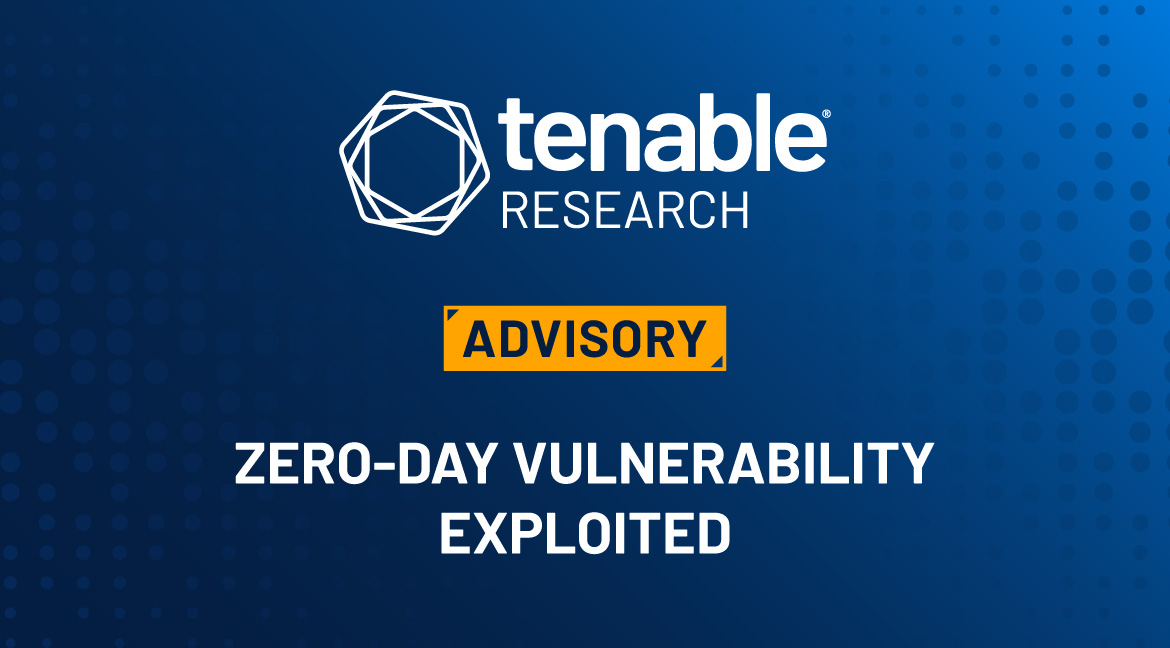CVE-2024-3400: Zero-Day Vulnerability in Palo Alto Networks PAN-OS GlobalProtect Gateway Exploited in the Wild

A critical severity command injection vulnerability in Palo Alto Networks PAN-OS has been exploited in limited targeted attacks. While a fix is not yet available, patches are expected to be released on April 14 and mitigation steps are available.
Update April 26: The Solution section has been updated to include a link to a Palo Alto Networks knowledge base article with remediation instructions.
Background
On April 12, Palo Alto Networks released a security advisory for a critical command injection vulnerability affecting PAN-OS, the custom operating system (OS) Palo Alto Networks (PAN) uses in their next-generation firewalls.
| CVE | Description | CVSSv3 | Severity |
|---|---|---|---|
| CVE-2024-3400 | Command Injection Vulnerability in the GlobalProtect Gateway feature of PAN-OS | 10.0 | Critical |
Analysis
CVE-2024-3400 is a critical command injection vulnerability affecting the GlobalProtect Gateway feature of PAN-OS. An unauthenticated, remote attacker could exploit this vulnerability to execute code on an affected firewall with root privileges. According to the advisory, this vulnerability impacts PAN-OS versions 10.2, 11 and 11.1 only when both GlobalProtect gateway and device telemetry are enabled. On April 16, Palo Alto updated the security advisory to reflect that firewalls with GlobalProtect gateway or GlobalProtect portal (or both) configured are impacted by this vulnerability. The advisory went further to note that device telemetry does not have to be enabled in order to be vulnerable to CVE-2024-3400.
Palo Alto Networks reports limited exploitation in the wild
According to the advisory, Palo Alto Networks confirmed that this vulnerability has been exploited in-the-wild in a “limited number of attacks.” While no specific details about these attacks were available at the time this blog was published, researchers at Volexity are credited with discovering the flaw. Steven Adair, President at Volexity, posted that exploitation was observed “at multiple customers” and that his team discovered in-the-wild exploitation “just two days ago.”
We have seen limited exploitation but impact at multiple customers. We first detected this just two days ago. Impressive response from the Palo Alto Networks team, as they quickly worked with us and have now pushed a Threat Protection signature with a fix to come April 14.
— Steven Adair (@stevenadair) April 12, 2024
On April 12, Volexity published a blog post detailing the observations they made from one of their customers who was impacted by CVE-2024-3400. According to Volexity, exploitation was observed on April 10 and attributed to a threat actor they track as UTA0218. The threat actor pivoted from the compromised device to move laterally on the victims network. As their investigation continued, they discovered other customers impacted as far back as March 26. For more information on the threat actor activity observed, we recommend reviewing Volexity's blog post.
Palo Alto Networks Unit 42 also published a blog on April 12, noting that they are actively tracking exploitation activity that they are calling Operation MidnightEclipse. According to Unit 42, the exploitation they've analyzed appears to be limited to a "single threat actor," however they do not rule out that other threat actors may attempt to exploit this flaw soon.
Historical exploitation of PAN-OS flaws
Network edge devices are frequently targeted by attackers. CVE-2020-2021, a critical authentication bypass vulnerability in PAN-OS, which also received a CVSSv3 score of 10.0, was highlighted as a frequently exploited vulnerability by advanced persistent threat (APT) actors in a joint Cyber Security Advisory from the Cybersecurity and Infrastructure Security Agency (CISA) and the Federal Bureau of Investigation (FBI).
CVE-2019-1579, a remote code execution vulnerability affecting PAN-OS devices, is another frequently exploited vulnerability by APT attackers as the National Security Agency (NSA) warned on October 7, 2019.
In addition to APT actors, both CVE-2020-2021 and CVE-2019-1579 have been exploited in the wild by ransomware groups, which was highlighted in our Ransomware Ecosystem report.
Proof of concept
At the time this blog post was published on April 12, no public proof-of-concept (PoC) exploit for CVE-2024-3400 was available. On April 16, watchTowr released a blog post detailing how they were able to reproduce the vulnerability, providing detailed steps on how to verify the command injection vulnerability. In addition, a post on X from Justin Elze, Chief Technology Officer at TrustedSec shows a payload observed in-the-wild:
Since it's out there now this is what I caught in wild CVE-2024-3400
GET /global-protect/login.esp HTTP/1.1 Host: X User-Agent: Mozilla/5.0 (Windows NT 10.0; Win64; x64) AppleWebKit/537.36 (KHTML, like Gecko) Chrome/90.0.4430.93 Safari/537.36 Accept-Encoding: gzip, deflate, br…— Justin Elze (@HackingLZ) April 16, 2024
With details around the exploitation of this flaw publicly released and multiple PoC exploits publicly available, it's likely we will see an uptick in attacks very soon.
Solution
As of when this blog was published on April 12, Palo Alto Networks had not released patches for this vulnerability. However hotfix releases of PAN-OS were released on April 14 and additional hotfix versions are expected to be released between April 14 and April 19.
| Affected Version | Hotfix Release Version | Expected Release Date |
|---|---|---|
| PAN-OS 10.2 | PAN-OS 10.2.9-h1 | Released on April 14 |
| PAN-OS 10.2.8-h3 | Released on April 15 | |
| PAN-OS 10.2.7-h8 | Released on April 15 | |
| PAN-OS 10.2.6-h3 | Released on April 16 | |
| PAN-OS 10.2.5-h6 | Released on April 16 | |
| PAN-OS 10.2.3-h13 | April 17 | |
| PAN-OS 10.2.1-h2 | April 17 | |
| PAN-OS 10.2.2-h5 | April 18 | |
| PAN-OS 10.2.0-h3 | April 18 | |
| PAN-OS 10.2.4-h16 | April 19 | |
| PAN-OS 11.0 | PAN-OS 11.0.4-h1 | Released on April 14 |
| PAN-OS 11.0.3-h10 | Released on April 16 | |
| PAN-OS 11.0.2-h4 | Released on April 16 | |
| PAN-OS 11.0.1-h4 | April 17 | |
| PAN-OS 11.0.0-h3 | April 18 | |
| PAN-OS 11.1 | PAN-OS 11.1.2-h3 | Released on April 14 |
| PAN-OS 11.1.1-h1 | Released on April 16 | |
| PAN-OS 11.1.0-h3 | Released on April 16 |
If immediate patching cannot be completed, Palo Alto Networks does provide the following mitigation options:
- Threat ID 95187, 95189, and 95191 can block attacks for those customers who have a Threat Prevention subscription
- Additionally, vulnerability protection must be applied to the GlobalProtect interface to prevent exploitation
If the Threat Protection mitigation cannot be applied, Palo Alto Networks recommends disabling device telemetry until the patch can be applied. However in an update to their security advisory on April 16, Palo Alto notes that "disabling device telemetry is no longer an effective mitigation." As these mitigations may be updated in the future, we recommend reviewing the advisory for the most up-to-date mitigation guidance.
On April 23, Palo Alto Networks published a knowledge base article titled "How to Remedy CVE-2024-3400" and it was updated on April 25 with additional remediation instructions. The article lists four scenarios and provides suggested remediation guidance, including if potential exfiltration has occurred. In this scenario, customers are instructed to update to one of the latest hotfix versions and perform a Private Data Reset.
Identifying affected systems
A list of Tenable plugins for this vulnerability can be found on the individual CVE page for CVE-2024-3400 as they’re released. This link will display all available plugins for this vulnerability, including upcoming plugins in our Plugins Pipeline.
Change Log
Update April 26: The Solution section has been updated to include a link to a Palo Alto Networks knowledge base article with remediation instructions.
Update April 17: The Analysis and Solution sections have been updated to reflect updates in Palo Alto's security advisory.
Update April 16: The Proof of Concept section has been updated to include newly released exploit details.
Update April 15: The Solution section has been updated to include the currently released hotfixes and additional upcoming hotfix releases.
Update April 12: The Analysis section has been updated to include an additional information about in-the-wild exploitation.
Get more information
- Palo Alto Networks security advisory for CVE-2024-3400
- Volexity blog: Zero-Day Exploitation of Unauthenticated Remote Code Execution Vulnerability in GlobalProtect (CVE-2024-3400)
- Palo Alto's Unit 42 blog: Threat Brief: Operation MidnightEclipse, Post-Exploitation Activity Related to CVE-2024-3400
Join Tenable's Security Response Team on the Tenable Community.
Learn more about Tenable One, the Exposure Management Platform for the modern attack surface.
- Exposure Management



